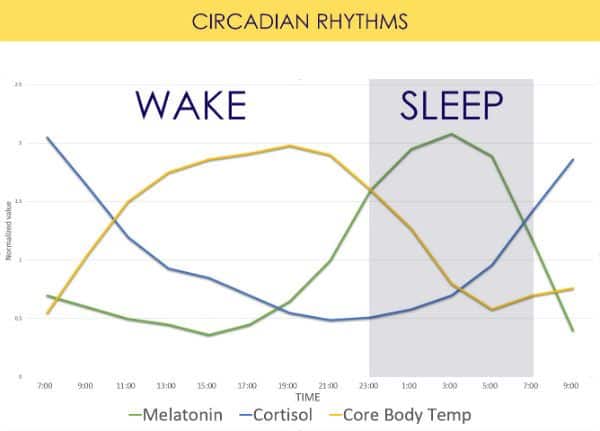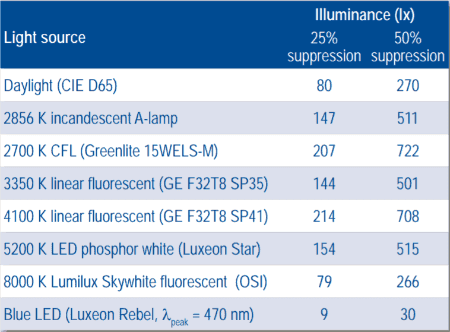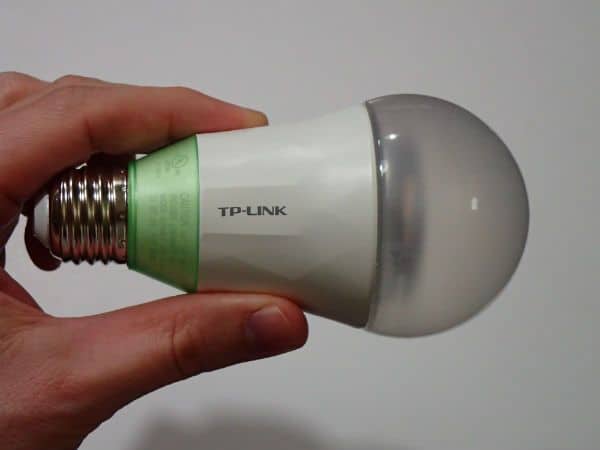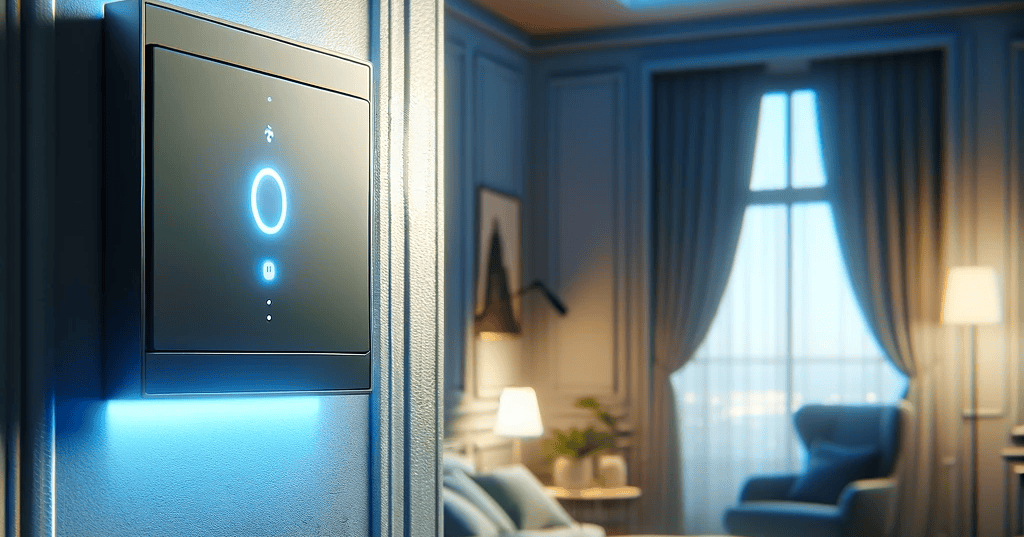If you’ve looked into buying smart lights, you may have seen claims of their ability to improve health. They claim that the color temperature of the lights adjusts naturally to keep your body in its natural rhythm. Although it seems to make sense, I am immediately skeptical of claims like this. Is this a crafty marketing gimmick, or is it a real tangible benefit of smart lighting? It seems to me like a perfect situation for a deeper investigation.
What Is The Claim?
Smart bulb manufacturers often claim that using their product can improve your health. These claims are specific to a certain type of smart bulb: the adjustable color temperature bulbs. I’m not talking about the ones that actually change color from red to blue to green or whatever other millions of colors. Those color changes are purely for entertainment or aesthetic purposes. I’m talking about the lights that put out white light but can adjust from a warm yellow glow reminiscent of a candle to a bright blue-white light more like the sun at high noon.
The Claim: Light has a big effect on your circadian rhythm and your regular lighting interferes with your circadian rhythm causing health problems. Smart bulbs can be programmed to give you the correct amount of light at the correct color temperature to work in harmony with your circadian rhythm instead of against it.
What Is The Circadian Rhythm?
The circadian rhythm is the daily cycle that regulates a number of important bodily functions such as body temperature, hormone production, cell regeneration, and brain wave activity. Your body has an internal clock that ensures these cycles take approximately 24 hours. Finer adjustments are made based on input from your environment. The most noticeable effects of Circadian processes are the effects it has on when you feel awake and when you get sleepy.
Melatonin is the hormone that makes us feel tired. Your circadian rhythm instructs your body to begin producing melatonin in the evening hours. It begins to build up and eventually you fall asleep. Production continues through the night and reaches a peak in the early morning hours. Then production stops shortly before waking up. Melatonin levels fall quickly as you wake up and fall to undetectable levels during the day.

Most people’s body clock isn’t timed perfectly to the Earth’s 24 hour day. The majority of people have a cycle that lasts about 15-30 minutes longer than 24 hours. If you lived in a bubble, without any alarm clocks, social cues, or environmental changes you would have a tendency to stay awake and wake up 15-30 minutes later each day. That means your sleep schedule would be constantly changing. Each day you would be sleeping and waking later until eventually, you have completely flip-flopped your awake and asleep times.
Since we live in a world with schedules, this sort of sleep schedule could prove problematic. Fortunately, your body has a built-in system to help synchronize your body’s internal clock with Earth’s 24 hour day/night cycle.
What Effect Does Light Have On Your Circadian Rhythm?
Your body is a magnificent piece of engineering. It evolved using the light of the rising and setting sun to sync your body’s circadian rhythm. Light suppresses the body’s natural production of melatonin. Therefore, light, whether natural or man-made, is the main driver of synchronization.

How much it suppresses melatonin production depends on the intensity of the light and the color temperature of the light. The brighter the light, the more significant the suppression. The higher the color temperature, the more effective the melatonin suppression. The bright blue-white light of many modern LEDs is an example of high color temperature light. The warm yellow glow of an incandescent bulb is much lower temperature and has a much smaller suppression effect.

Your body still has it’s natural cycle of melatonin production, but light effects can shift the cycle by up to 1-2 hours per day. That’s more than enough to account for the typical person’s 15-30 discrepancy between the body clock and Earth’s clock.
The correct type and intensity of light at the correct times will work to ensure your body’s clock and Earth’s clock remain in sync. This means that light in the morning will help us wake up and stay awake. And of course, darkness in the evening will prepare us for sleep and help us stay asleep at night.
What Happens When Your Rhythm Is Out Of Sync?
Too much high-temperature light in the evenings and into the night will suppress your melatonin production and make it more difficult to fall asleep. Conversely, a lack of light in the morning will delay the elimination of melatonin. It will be more difficult to shake that groggy morning feeling and much more likely that you’ll crawl back under the covers.
Most people have a schedule to keep regardless of how they slept the night before. You cannot wait to wake up when your body wants to wake up. So, you force yourself out of bed when the alarm goes off and you use all the tricks to try to get yourself going. You are fighting your body and it’s not good for your mental or physical health.
There is a whole laundry list of possible health problems that pop up due to sleep and circadian rhythm disruptions. There is an increased risk of depression, risk-taking, and stimulant use. Many people suffer from reduced performance in the areas of cognitive skills, memory, communication, and motor skills. Long term disruptions have shown increased risk of cancer, diabetes, and obesity.
How Can Smart Lighting Improve Your Life?
What better way to start your day than a gentle transition from sleep to being awake and alert. Philips makes a smart alarm clock that gently begins to brighten as your alarm time nears. You may have the curtains closed, but the alarm clock will simulate a sunrise right in your bedroom. Even if you are still asleep, the light will begin to suppress the production of melatonin. When your alarm finally does go off you may find you are already awake and alert and ready to start your day.
Smart bulbs have the ability to shift their color temperature and adjust their intensity. They can even be set up on a timer so that they synchronize with your day.
Bright, high color temperature light in your morning living space or work space will help to keep you alert and productive.
During the evenings, your body should be preparing for sleep. Of course, most adults stay awake for some time after the sun goes down and use artificial lights to illuminate our living spaces. You don’t want the same bright blue light shining down on you when you are supposed to be preparing for sleep. Instead, you want a soft warm glow (think candle light). Smart bulbs can be programmed to automatically shift their color depending on the time of day.
Stack bulbs can also be programmed to a night-time setting. This should be a low-temperature low-intensity light that gives only enough light to navigate your hallways for a visit to the bathroom. I suppose it would also work for finding your way to the kitchen for a midnight snack, but that opens a whole other host of health concerns.
Final Thoughts
After doing the research, I can see that the potential effects of light on your health are very real and potentially very significant. In fact, I have decided to purchase some adjustable color temperature smart bulbs to see if they can improve my productivity.
My home office is currently located on the opposite side of the room from windows. There is also a large overhang that really limits the amount of natural light that can enter. Therefore, anytime I’m working I need to have the lights on. The light I’m currently using is a low-temperature bulb that gives off that homey yellow glow.
According to circadian lighting theory, that’s alright if I’m doing some work before bed. But I do most of my work in the morning and afternoon hours. Although I don’t have a problem waking up, once I get to my desk I often feel lethargic and lack focus until the afternoon hours. Perhaps I could benefit from a bright blue-white light in my office.
I haven’t decided which brand to go with yet, but I’ll make sure to write a review when I do.
Have you had any experience with circadian lighting? Good? Bad? Big effect? No effect? Let me know in the comments below and I’ll be happy to start up a conversation!




